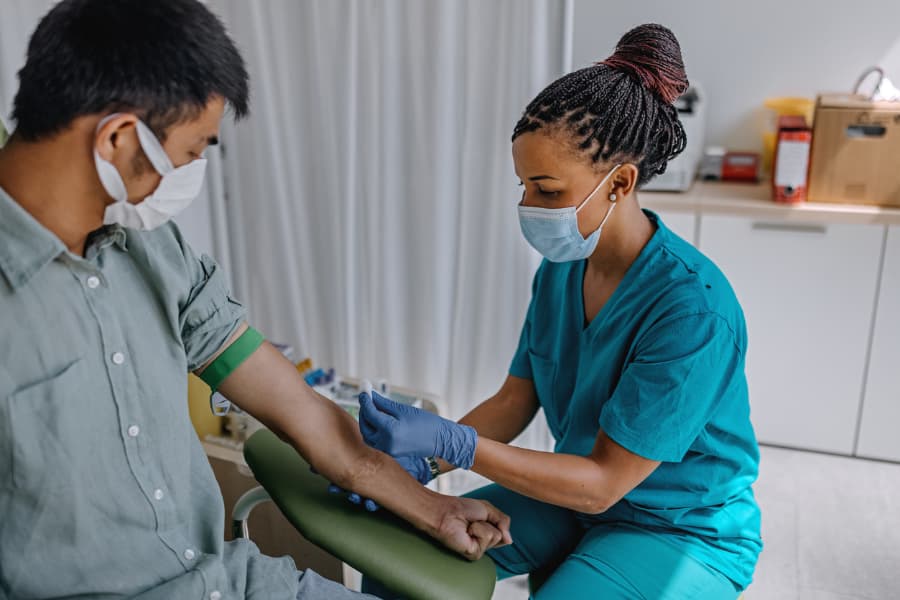Not known Facts About Northeast Medical Institute - New Haven Campus Phlebotomy Course & Cna Class
Not known Facts About Northeast Medical Institute - New Haven Campus Phlebotomy Course & Cna Class
Blog Article
Everything about Northeast Medical Institute - New Haven Campus Phlebotomy Course & Cna Class
Table of Contents5 Easy Facts About Northeast Medical Institute - New Haven Campus Phlebotomy Course & Cna Class ShownThe Main Principles Of Northeast Medical Institute - New Haven Campus Phlebotomy Course & Cna Class Northeast Medical Institute - New Haven Campus Phlebotomy Course & Cna Class - Truths10 Simple Techniques For Northeast Medical Institute - New Haven Campus Phlebotomy Course & Cna ClassNortheast Medical Institute - New Haven Campus Phlebotomy Course & Cna Class - An Overview6 Simple Techniques For Northeast Medical Institute - New Haven Campus Phlebotomy Course & Cna Class
The usage of such tools must be gone along with by other infection prevention and control practices, and training in their use. Not all safety devices are applicable to phlebotomy. Prior to selecting a safety-engineered tool, individuals need to completely explore available gadgets to establish their ideal usage, compatibility with existing phlebotomy techniques, and efficacy in safeguarding personnel and patients (12, 33).For setups with low sources, expense is a motoring consider procurement of safety-engineered devices - PCT Courses. Where safety-engineered tools are not readily available, skilled usage of a needle and syringe serves. Unintended direct exposure and details information regarding an incident must be tape-recorded in a register. Support services need to be promoted for those that undertake unintentional direct exposure.
labelling); transportation problems; interpretation of outcomes for professional management. In an outpatient division or facility, supply a dedicated phlebotomy cubicle containing: a clean surface area with two chairs (one for the phlebotomist and the various other for the person); a hand laundry container with soap, running water and paper towels; alcohol hand rub. In the blood-sampling room for an outpatient division or clinic, offer a comfortable reclining couch with an arm remainder.
Everything about Northeast Medical Institute - New Haven Campus Phlebotomy Course & Cna Class
Make sure that the indicators for blood tasting are plainly defined, either in a created method or in recorded directions (e.g. in a lab form). Accumulate all the tools required for the treatment and place it within risk-free and easy reach on a tray or cart, making certain that all the items are plainly visible.
Where the individual is grown-up and conscious, comply with the actions outlined listed below. Introduce yourself to the client, and ask the person to state their complete name. Examine that the research laboratory type matches the client's identity (i.e. match the person's details with the laboratory type, to make sure exact identification). Ask whether the license has allergic reactions, fears or has ever before collapsed during previous injections or blood attracts.
Make the client comfy in a supine setting (if feasible). Location a tidy paper or towel under the patient's arm. Talk about the examination to be performed (see Annex F) and obtain spoken permission. use this link The patient has a right to reject an examination any time prior to the blood sampling, so it is very important to ensure that the client has understood the treatment.
The Best Guide To Northeast Medical Institute - New Haven Campus Phlebotomy Course & Cna Class
Extend the patient's arm and inspect the antecubital fossa or forearm. Find a vein of an excellent size that is noticeable, straight and clear. The diagram in Area 2.3, shows typical placements of the vessels, yet many variants are possible. The average cubital vein lies in between muscle mass and is generally one of the most easy to puncture.
DO NOT insert the needle where capillaries are diverting, since this increases the possibility of a haematoma. Situating the vein will assist in figuring out the appropriate size of needle.
Haemolysis, contamination and presence of intravenous fluid and medication can all modify the outcomes (39. Nursing staff and medical professionals may access central venous lines for specimens following protocols. Samplings from central lines carry a danger of contamination or incorrect research laboratory examination results. It serves, yet not optimal, to injure samplings when very first introducing an in-dwelling venous tool, before linking the cannula to the intravenous liquids.
Not known Incorrect Statements About Northeast Medical Institute - New Haven Campus Phlebotomy Course & Cna Class
Failing to allow adequate contact time enhances the danger of contamination. DO NOT touch the cleaned site; in particular, DO NOT put a finger over the blood vessel to assist the shaft of the revealed needle.
Ask the person to develop a hand so the capillaries are much more popular. Enter the vein promptly at a 30 level angle or less, and proceed to introduce the needle along the blood vessel at the easiest angle of entrance - PCT Courses. Once sufficient blood has been gathered, release the tourniquet prior to taking out the needle
Fascination About Northeast Medical Institute - New Haven Campus Phlebotomy Course & Cna Class
Take out the needle carefully and apply gentle pressure to the site with a tidy gauze or dry cotton-wool round. Ask the individual to hold the gauze or cotton woollen in position, with the arm extended and raised. Ask the individual NOT to bend the arm, since doing so creates a haematoma.

Examine This Report about Northeast Medical Institute - New Haven Campus Phlebotomy Course & Cna Class
Where feasible, keep the tubes in a shelf and move the shelf towards you - https://www.provenexpert.com/marvin-gordon/?mode=preview. If the example tube does not have a rubber stopper, infuse exceptionally gradually into the tube as decreasing the stress and rate used to transfer the sampling lowers the risk of haemolysis.

Report this page